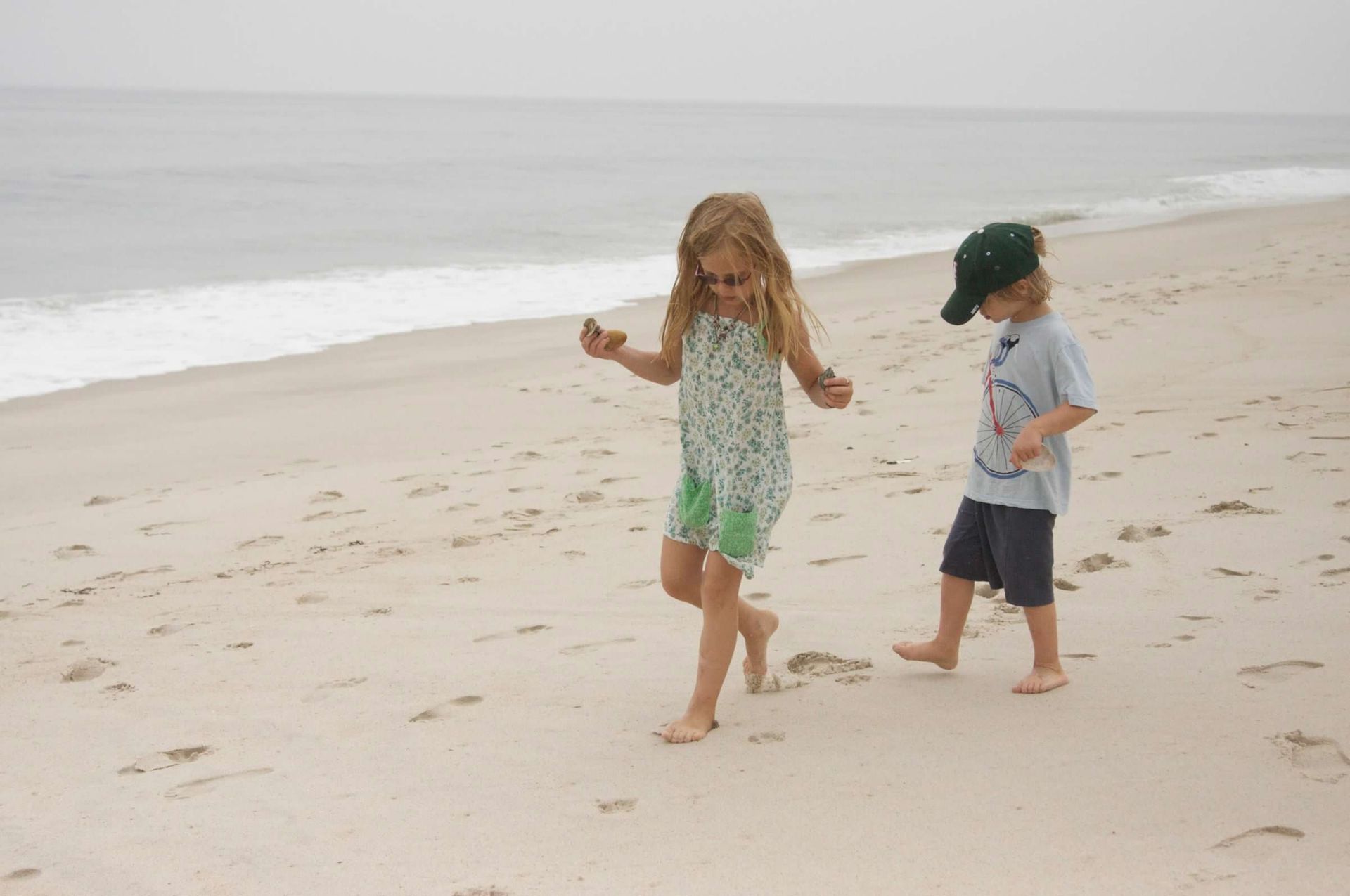Swap Yelling for Connection
Andrea Robbins • April 22, 2025
Say This. Not That. Simple Shifts for Calmer Parenting

We’ve all been there.
You ask once… then again… and before you know it, you're yelling “CALM DOWN!”, which, let’s be honest, never actually calms anyone down.
Here’s the truth: yelling may feel like it works in the short term, but it often does more harm than good. It can scare our kids, damage trust, and leave everyone feeling disconnected. If you’re tired of the power struggles and guilt afterward, there is a better way.
Let’s talk about what to say instead.
Swap Yelling for Connection
Instead of:
“CALM DOWN!”
Try:
“How can I help you right now?”
Instead of:
“STOP THAT!”
Try:
“I see you’re having a hard time. What’s going on?”
Instead of:
“I’ve had ENOUGH!”
Try:
“I need a break. Let’s take a moment to reset.”
Why This Works
Connection doesn’t mean you’re being permissive.
It means you’re tuning in before you step in.
You can be calm and firm at the same time. You can hold boundaries and lead with empathy. When we shift our language, we shift the energy and that opens the door to true cooperation, not just compliance.
Because connection is more than just a parenting buzzword.
It’s the foundation of:
Emotional safety
Growth
Long-term trust
Real, lasting cooperation
So next time you feel the urge to yell, pause. Take a breath. And try a connected phrase instead. You might be surprised at how powerful those small swaps can be.
You’ve got this. And I’m here cheering you on.
Warmly,
Andrea
Parenting Coach
P.S. Want more tools to stay calm and confident in tough moments? Let's jump on a FREE 20-minute call (click here to schedule). I'm working on something special just for you. 👀

When you ask your child to do something, and you find yourself (depending on their age) in a power struggle or with a lot of pushback, try this strategy. It will likely boost cooperation. Children fight for power when they feel controlled, cornered, or voiceless. Their brain goes into threat mode , and the instinct becomes: “You can’t make me.” Giving choices shifts their brain out of threat and into autonomy, one of the strongest human motivators. When kids feel even a little control, they don’t need to fight for all of it. So when you offer two choices, you’re doing three things at once: 1. You meet their need for autonomy. Power struggles happen because kids want to feel capable and respected. Choices give them that in a safe, structured way. "Would you like to clean your room now or at 12:00? 2. You keep the boundary, but lower the intensity. You’re not backing down. You’re giving options within your limit. “Do it now” = battle. “Here are your choices” = cooperation. 3. You activate their thinking brain. A child can’t think in a power struggle — their emotional brain is driving. Choices bring the prefrontal cortex back online. That’s when cooperation becomes possible again. You stay regulated, which regulates them. Offering choices keeps you calm. A calm adult helps the child’s nervous system settle, which ends the fight faster. Best, Andrea Robbins, M.Ed | Parent Coach | Parenting Vistas P.S. If you're looking for strategies that fit your family's specific needs, set up a free call, and we can get started.

Want Your Child to Actually Talk to You More? If you’ve ever asked your child, “How was your day?” only to get a shrug, a one-word answer, or total silence… you’re not alone. Kids want to communicate and connect, but the way we approach conversations can either open the door or shut it completely. Here are 3 simple, powerful ways to build better communication with your child (no long talks or perfect parenting required) : 1. Get Curious, Not Controlling When your child says or does something confusing or unexpected, it’s so easy to jump into lecture mode. But curiosity creates conversations. Control creates shutdown. Try saying: “Help me understand what happened.” That one sentence keeps your child’s brain open instead of defensive. It tells them: You’re safe. I’m listening. 2. Reflect What You Hear Kids open up more when they feel seen and understood, not corrected. A simple reflection can make all the difference: “So you felt left out when they didn’t pick you?” This helps your child feel seen and supported, and it builds trust much faster than advice or problem-solving. 3. Keep It Short + Safe When kids feel overwhelmed by too many words, too much emotion, or a confusing tone, they shut down. Use short sentences, a calm voice, and clear reassurance, like: “You’re not in trouble. I just want to understand.” This helps their nervous system settle so their words can flow. Communicate to connect, and your child will follow your lead. Best, Andrea Robbins, M.Ed | Parent Coach | Parenting Vistas P.S. If you're ever looking for personalized tips specific to your family, sign up for a free call , and we can get started right away.

You Can’t "Do" a "Don’t” The Parenting Shift That Makes Everything Easier Most parents don’t realize it, but one tiny communication habit can make or break cooperation: We spend a lot of time telling kids what not to do. “Don’t run.” “Don’t yell.” “Don’t hit.” “Don’t touch.” Here’s the problem: Kids can’t do a don’t. Their brains don’t automatically translate a “stop doing this” into “start doing that instead.” So when we say “Don’t…!” they still don’t know what to do. And confusion often leads to frustration, pushback, or more of the same behavior. Let’s break down what this means and how you can use it to create calmer, clearer moments with your child. Why “Don’t” Doesn’t Work (Especially for Young Kids) Young children process language literally. When they hear: “Don’t run!”, their brain pictures… running. And without a clear alternative behavior, they have nothing to pivot to. That’s why “don’t” statements (even with the best intentions) often make kids: feel corrected but not guided escalate because they don’t know what to do or repeat the behavior you’re trying to stop It’s not defiance. It’s development. What To Say Instead: Give the “Do” If you want your child to stop something, tell them what to do instead. Here are a few swaps to make your life easier: ❌ “Don’t run.” ✅ “Use walking feet.” ❌ “Don’t grab.” ✅ “Ask for a turn.” ❌ “Don’t yell.” ✅ “Use a quieter voice.” ❌ “Don’t touch that.” ✅ “Keep your hands on your lap.” These small shifts give your child a clear path forward, and that’s when cooperation really improves. Why This Works So Well By focusing on the “do,” you’re: offering a concrete action they can follow keeping their brain regulated reducing power struggles setting them up for success instead of shame Kids feel more capable, more understood, and more willing to work with you. And you get fewer battles and way more moments that feel peaceful. Try This Today Pick one “don’t” phrase you use often. Rewrite it as a “do.” Use it for the next 24 hours and watch what happens. Small shifts like this change the entire tone of your home. Best, Andrea Robbins, M.Ed. | Parent Coach | Parenting Vistas

When Saying “No” Feels Impossible If you’ve ever said “no” to your child and then panicked the second they got upset… you’re not alone. I hear this all the time from the parents I work with: “I don’t want to be the reason my child is crying.” “They get so upset… maybe I should just let it go.” “I hate feeling like the bad guy.” And so the firm “no” suddenly becomes…“Okay, fine.” But here’s the truth no one really talks about: A child being upset does not mean you’re doing something wrong. Your child is allowed to have feelings or a reaction to your boundary. Their tears or frustration aren’t a cue to change the boundary; they’re part of how they learn to handle life. And when you hold the boundary calmly, something powerful happens. What a Child Learns When You Hold a Boundary 1. Boundaries = Safety Kids test limits not to be difficult, but to confirm that someone steady is in charge. When you hold the line, the world feels predictable and safe. 2. Emotions Are Safe to Feel Your child learns: “I can feel upset… and still be okay.” You’re teaching emotional literacy and intelligence without saying a word. 3. Disappointment Is Tolerable They begin to understand that disappointment isn’t catastrophic. They can handle it. This builds resilience little by little. 4. Regulation Starts With Your Calm When you stay grounded, their nervous system borrows your stability. This is how children actually learn to regulate. 5. No Doesn’t Mean Disconnection A held boundary sends the message: “I love you, even when you’re frustrated.” Rules and relationship can coexist. 6. Respect Goes Both Ways They learn that everyone has limits and that honoring them is part of being in relationship with others. 7. Consistency Builds Trust When “no” is sometimes “no” and sometimes “fine,” kids stay in testing mode. When it’s consistent, they relax. 8. Problem-Solving Skills Grow Without a parent rescuing or giving in, children learn to adapt, wait, and find alternatives. So What Should You Do in the Moment? Keep the “no.” Let your child have their feeling. Stay nearby, steady, and connected. Try: “I know waiting is hard.” “You’re really upset. I’m right here.” “We’ll eat soon. You’re safe.” You don’t have to make the feeling go away. You don’t have to convince them. You just have to be the calm in the storm. Your steady presence teaches far more than the boundary itself. Not the rule… Not the limit… But the safety underneath it. If saying “no” feels impossible right now, you’re not failing, you’re learning. And your child is learning with you. Your “no” today is shaping the emotional, relational, and even moral strengths your child will rely on years from now. If you want more support with boundaries, emotional regulation, and calmer days at home, sign up for a free call to get started. Best, Andrea Robbins, M.Ed | Parent Coach | Parenting Vistas

Every parent has had that moment, your child does something you just told them not to do, and before you can stop yourself, frustration takes over, and you’re saying, “That’s it, no iPad for a week!” We’ve all been there. It’s not because we’re bad parents, it’s because we care and we want to teach them right from wrong and help them understand boundaries. But here’s something most of us were never taught: Punishment might stop the behavior for now, but it doesn’t help our kids build the skills they need for next time. Here’s a simple shift that changes everything : Before you punish, pause . Take a deep breath and ask your child, “What’s going on? Can you help me understand?” That one curiosity question does so much; it calms your child, opens up communication, and keeps your connection strong. It’s not giving in. It’s guiding. It tells your child, “I’m here with you, not against you.” That sense of safety is what helps them calm down enough to learn from what happened. And over time, it teaches your child self-control, empathy, and problem-solving skills that punishment can’t. Next time your child pushes your buttons, try that pause. Your relationship and your child’s self-control will thank you. If you’d like more tools like this to help you stay calm and connected while still holding limits, let’s talk. 👉 Set up a free consult call and I’ll help you find strategies that actually work for your family.

Turn Morning Chaos Into Calm With Just One Change I remember mornings that felt like a whirlwind, fights about getting dressed, endless reminders, and hearing “I don’t want to go to school” on repeat. By the time I dropped my kids off at school, I was so tense… it would take me until mid-morning to calm down and feel like myself again. Those chaotic mornings affected us all and were not a pleasant way to start the day. Over time, I realized that one small shift could change the entire rhythm of our mornings, helping both me and my kids start the day calmer, connected, and more present. Instead of rushing, nagging, or repeating yourself, try giving a simple choice to your child: “Do you want to wear the blue shirt or the red shirt?” “Do you want to brush your teeth first or put on your socks first?” A small choice gives your child a sense of control, reduces power struggles, and creates a calmer, smoother start for everyone. Suddenly, mornings aren’t a battle; they’re a chance to practice cooperation and connection. Try this tomorrow morning and notice the difference. A little choice can go a long way. Pro Tip : Pair the choice with a calm, steady presence, because your composure matters just as much as the options you offer. Want more practical tips for calmer mornings? Follow me on Instagram @Parenting.Vistas for daily strategies, resources, and tools to turn chaos into connection.

Last week, a parent I work with told me about a battle she had with her child over putting on shoes. Her 5-year-old refused. She could feel her frustration building. They were running late, and she was about to say, “Just do it now!” But instead, she took a breath and said, “Seems like you really wish you didn’t have to put your shoes on right now, huh?” Her daughter paused, looked at her, and said softly, “Yeah.” And just like that, the fight was over. She still didn’t want to do it, but she stopped resisting. Within a minute, she had her shoes on, and they were out the door. Here’s why that sentence works: It acknowledges the feeling behind the behavior. Kids need to feel seen before they can shift. It takes you out of the power struggle. When you show empathy, you’re no longer the “enemy”; you’re on the same team. You’re not giving in or letting go of your boundaries; you’re connecting first. And when kids feel understood, they’re far more willing to cooperate. It might sound like a small tweak, but saying “You really wish you didn’t have to…” sends a huge message, “I see you and care about how you feel”. Next time your child digs in their heels, take a breath and try it. You might be surprised at how quickly things shift when you lead with connection and empathy instead of control. Andrea Robbins, M.Ed Parent Coach & Educator P.S. If you’re ready to stop the daily power struggles for good, my coaching program equips parents to create calm, confident, and connected homes without yelling, punishments, or rewards. Spots are limited, so click here to learn more and grab your spot today:

You call their name. Once. Twice. Three times. Nothing... Sound familiar? Whether it’s your 5-year-old working intently on their Legos or your teen glued to their phone, being ignored by your child can feel infuriating. You start to feel that familiar tension build. You feel invisible and maybe even disrespected. But here’s the truth: When your child or teen “ignores” you, it’s rarely about attitude. It’s about capacity and connection. Younger kids can get completely absorbed in what they’re doing. Teens, meanwhile, are working hard to balance independence, identity, and social life. Both need your help regulating and reconnecting, not reacting. 3 ways to handle those moments (no matter their age) 1. Get their attention before giving direction. Calling from across the room rarely works. Move closer. Gently touch your young child’s shoulder or say their name. Wait for eye contact. With teens, timing matters. Pick your moment. Connection lands best when they’re not already absorbed in something. 2. Stay calm (even when you want to explode). It’s okay to feel frustrated, but when you yell, kids get defensive, not cooperative. Lower your tone, take a breath, and model calm. Whether they’re five or fifteen, your calm is the anchor that helps them find theirs. 3. Lead with connection, not correction. Start by noticing what they’re doing: “Looks like you’re really into that game.” “You seem distracted, long day?” Feeling seen helps them be open to what’s next, and they’re more likely to listen. When your child ignores you, it’s easy to take it personally. But often, it’s not rejection, it’s just development. Connection doesn’t mean perfect communication in the moment. It means showing up, over and over again, in calm and consistent ways that remind your child or teen: You matter. I’m here. And we can figure this out together. Best, Andrea Robbins, M.Ed | Parenting Vistas | Parent Coach P.S. If you’re ready for more calm, cooperation, and connection in your family, schedule a free call today.

How Play Builds Both Development and Connection If you’ve ever watched your child build a fort out of couch cushions, turn sticks into magic wands, or talk to imaginary friends, you’ve seen the incredible power of play in action. Play isn’t “just fun.” It’s how children make sense of the world, develop social and emotional skills, and practice problem-solving in a safe space. Neuroscientists and child development experts remind us that play helps children integrate their experiences and strengthen the brain connections needed for learning, emotional regulation, and empathy. But many parents may not realize that play isn’t just important for children’s development; it’s a powerful way to connect with your child. When a parent joins in, even for just a few minutes, it sends a clear message: “I see you. I enjoy being with you.” That sense of connection strengthens trust, cooperation, and communication far more than lectures, rules, or rewards ever could. The key is to let your child take the lead. Follow their imagination, ask questions, and show curiosity. It’s not about structuring lessons or guiding the “right way” to play; it’s about being present and engaged in their world. Next time your child invites you to play, see it not as a break from your to-do list, but as an opportunity. Play with them, learn with them, and most importantly, connect with them. The benefits will ripple far beyond the game itself, building both their development and your relationship in ways that last a lifetime. Try this today: Spend just 10 minutes following your child’s lead in play. No agenda. No multitasking. Just join in. Meet them where they are. The more connection you build through play, the less you’ll find yourself yelling. Best, Andrea Robbins, M.Ed | Parent Coach | Parenting Vistas P.S. If you'd like to make play your new parenting superpower , book a consult call here.

You give your child the wrong color cup, and they lose it. Again. You’re exhausted, frustrated, and wondering how something so small could cause such a big explosion. Here’s the truth: it’s not about the cup. It’s about control, autonomy, and overwhelm. Tantrums Aren’t “Bad Behavior” When your child melts down, they’re not being manipulative or dramatic; they’re communicating. Tantrums are your child’s nervous system saying, “This is too much for me right now.” Most young children simply don’t have the language or emotional regulation skills to say: “I feel out of control.” “My day isn’t going how I wanted.” “This tiny thing pushed me over the edge.” So instead, they cry, yell, or throw things. And while it feels personal, it’s really not about you. It’s about a child whose brain and body are overwhelmed. Seeing the Need Beneath the Behavior When you can remind yourself that it’s not about the cup (or the sandwich cut the “wrong” way, or the socks that “feel weird”), something shifts. You start to see the need behind the behavior. Maybe your child needs connection. Maybe they’re feeling powerless and need a sense of control. Maybe their nervous system is overloaded and needs help calming down. When you look beyond the behavior and see the unmet need, it becomes easier to respond with curiosity and empathy instead of frustration. Staying Calm: The Real Teaching Moment It’s tempting to react: to yell, to punish them, or try to reason with them in the middle of the chaos. But what your child needs most in that moment is your calm presence. Every time you stay grounded during their meltdown, you’re showing them what emotional regulation looks like. No reward or punishment can teach that the way you can. Your calm tells your child, “You’re safe. I’ve got you.” And that’s what helps their nervous system settle. 3 Things to Try Next Time When the next “wrong cup” moment happens, try this: 1. Pause and breathe. Take a moment to regulate yourself before responding. 2. Name and validate the feeling. “You really wanted the other cup. That’s so frustrating.” Feeling seen helps your child calm faster. 3. Offer choice within limits. “Would you like the blue cup or the red cup?” This gives your child a sense of control. Tantrums aren’t a sign you’re failing as a parent. They’re an opportunity to build your child’s emotional intelligence and to strengthen your connection in the process.

